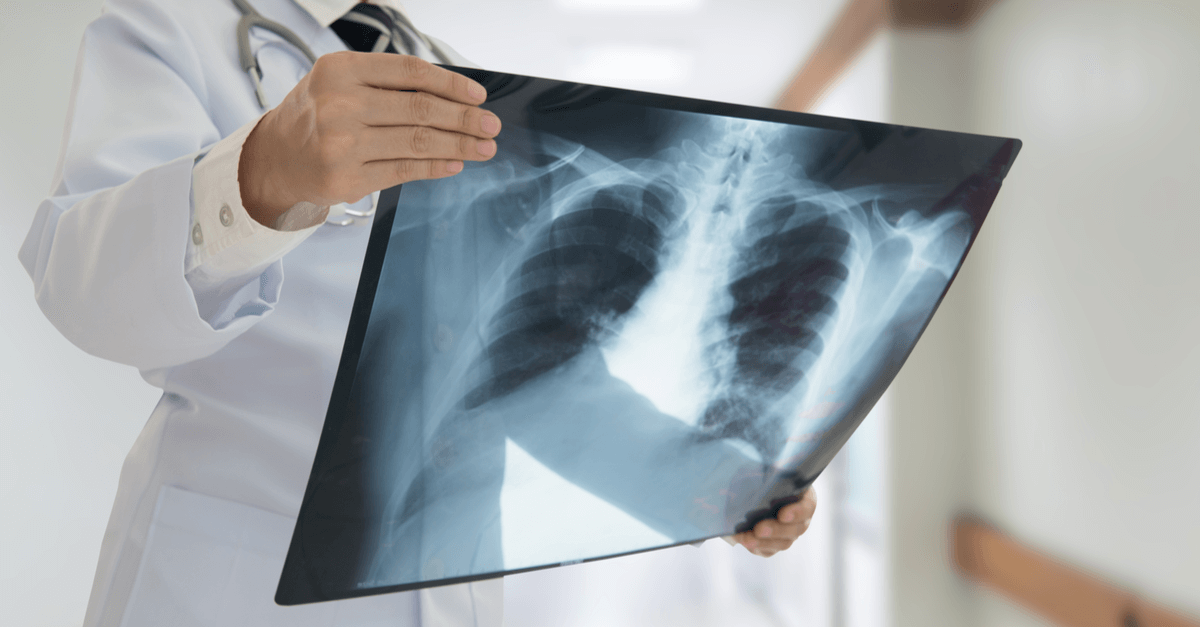Radiology refers to the imaging scans doctors and other medical professionals use to diagnose certain health conditions.
For veterans exposed to asbestos, radiology allows doctors to screen them for asbestos-related diseases like mesothelioma and asbestosis. While both of these conditions are caused by asbestos, they are very different.
Mesothelioma is an aggressive cancer, while asbestosis is a non-cancerous but serious lung disease. Doctors can distinguish between the two with various radiology and diagnostic tests.
Veterans who served between the 1930s and 1980s have a higher risk of asbestos diseases because the military heavily relied on asbestos-based products without knowing the dangers. Getting diagnosed early with radiology tests can improve veterans' outcomes with these diseases.
Learn how the Mesothelioma Veterans Center can help veterans at risk of asbestos-related diseases get diagnosed and treated in our Free Veterans Packet.
Radiology for Asbestos-Related Diseases Explained
Radiologists (doctors who specialize in radiation-based imaging scans) perform a range of tests to confirm a person’s diagnosis.
Commonly used radiology tests include:
- X-rays, which use a limited form of radiation to create pictures of the inside of the body.
- Positron emission tomography (PET) scans, involving a radioactive dye that is absorbed by cancerous or abnormal tissue to help it appear on imaging scans
- Computed tomography (CT) scans, which combine X-rays from several angles to create a more detailed image of the body than standard X-rays
- Magnetic resonance imaging (MRI) scans that use both magnetic fields and radio waves in order to produce detailed imaging of the patient’s body
Doctors may use one or more of these to help diagnose someone with diseases caused by asbestos. U.S. veterans who are experiencing symptoms of mesothelioma or asbestosis, like trouble breathing, should talk with their doctor as soon as possible to begin screening options.
Mesothelioma Radiology
Mesothelioma can form in different spots throughout the body, including the lung lining (pleura), abdominal lining (peritoneum), heart lining (pericardium), and testicle lining (tunica vaginalis).
Because of this, mesothelioma radiology scans will be performed depending on where the patient is experiencing discomfort. These radiology scans look for signs of cancerous tumors or masses.
Mesothelioma is often detected in X-rays when the lungs appear completely white due to pleural effusions (fluid buildup around the lungs) and pleural thickening.
The most common radiology scan for mesothelioma is a CT scan. CT scans can help determine how far the cancer has spread, allowing doctors to stage mesothelioma and provide proper treatments accurately.
PET scans may also be used to distinguish between cancerous and noncancerous thickening of the pleura and to see if the cancer has spread to the lymph nodes. Further, MRIs may help doctors classify the cancer into stages if needed.
Request our Free Veterans Packet to learn how we can connect eligible veterans with top doctors, imaging tests, and treatments.
Asbestosis Radiology
If a patient suspects they have asbestosis, doctors will typically perform X-rays or CT scans of the chest and look for any abnormalities in the lungs.
Unlike mesothelioma, asbestosis affects the lungs themselves, meaning the imaging scans will only be performed there.
Asbestosis makes the lung tissue appear whiter and more opaque than usual in imaging scans. The white areas in the X-rays may look like an irregular, net-like pattern around the lower part of the lungs.
Doctors can also check for cancerous tumors within the lungs using these scans, as patients exposed to asbestos can develop asbestosis and other conditions like lung cancer.
Call (877) 450-8973 now if you or a veteran you love has asbestosis or mesothelioma. Our team of veteran advocates can help you access financial support.
Next Steps After Radiology Scans for Asbestos Diseases
Once radiology scans have been finished, doctors will complete the asbestosis or mesothelioma diagnosis in one of a few ways.
In cases where mesothelioma is suspected, a biopsy must be performed. A biopsy is a sample of fluid or tissue examined under a microscope to determine if cancer cells are present.
If doctors suspect only asbestosis, they may perform lung functioning tests to see how badly the lungs have been damaged.
They may also use biopsy tests like a thoracentesis (removal of fluid using a needle) or a bronchoscopy (tube insertion into the lungs) to find out if cancerous cells might also be present.
Help Getting a Diagnosis and Treatment for Mesothelioma & Asbestosis
Imaging scans play a big role in helping to diagnose veterans with mesothelioma or asbestosis. Once a diagnosis is confirmed, veterans can start getting the best treatments possible to hopefully live longer.
Whether a veteran believes they might have asbestosis or mesothelioma, they have plenty of options to get properly diagnosed.
For example, some of the world's best mesothelioma specialists are partnered with the U.S. Department of Veterans Affairs (VA) to provide health care for veterans. Veterans can pursue diagnostic tests and treatments from these specialists if they have VA health care.
Our team can help veterans connect with doctors near them, apply for benefits, and more. Get our Free Veterans Packet to learn about all the ways we can help veterans.


